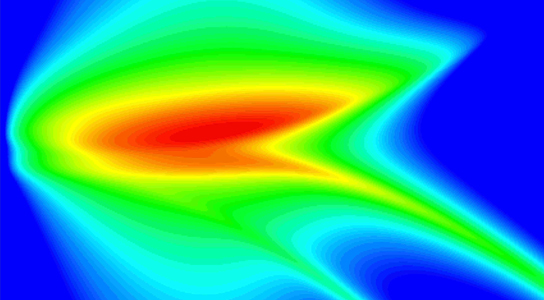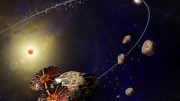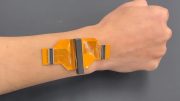
Image via Probing Anisotropic Superfluidity in Atomic Fermi Gases with Rashba Spin-Orbit Coupling. Credit: Phys. Rev. Lett. 107, 195304 (2011).
Quantum physicists have shown that superfluid gases can conduct without experiencing any resistance, possibly paving the way to help model the early Universe in the lab.
The scientists published their findings in the journal Nature. Atoms within superfluids do not experience resistance since they exploit quantum effects to band together. This allows them to perform strange feats, like flowing up the walls of their containers. These atoms should also be able to conduct through a narrow channel, without feeling any resistance caused by the confined space, in the same manner as the electrons in a superconductor move without any electrical resistance.
Tilman Esslinger, a quantum physicist at the Swiss Federal Institute of Technology (ETH) in Zürich, and his colleagues started by manipulating a cloud of lithium atoms, chilled to just less than a microkelvin above absolute zero. Using lasers, they were able to squeeze the gas into a dumbbell shape to create two reservoirs of atoms linked by a narrow bridge, placing more atoms on one side than on the other. The bridge was closed using a ‘gate’ laser. In the beginning, the cloud was not a superfluid, just a normal atomic gas. The team lifted the gate and atoms began to drift across the bridge at about 5 millimeters per second. A magnetic field was then applied to the gas, which forced it into an exotic quantum state. When the experiment was repeated with the same superfluid, the team noticed a change. There was no resistance in the channel and the atoms sped up to around 30 millimeters per second.
This setup could be used to investigate the origin of other strange quantum effects, like how some solids can superconduct at high temperatures of about 70 kelvin. Since there are complex interactions inside solids, it’s hard to determine exactly what is occurring.
An atomic gas could be tuned to simulate high-temperature superconductivity in controlled conditions, allowing scientists to learn more about superconductivity and how to make it survive at room temperature.
The superfluid’s quantum properties are similar to those of the hot fiery ball of gas, made up of quarks and gluons, that appeared soon after the Big Bang. Since cosmologists don’t have exact equations about what happened, this may offer a way to model the cosmos in a laboratory setting.
Reference: “Observing the drop of resistance in the flow of a superfluid Fermi gas” by David Stadler, Sebastian Krinner, Jakob Meineke, Jean-Philippe Brantut and Tilman Esslinger, 28 November 2012, Nature.
DOI: 10.1038/nature11613









Be the first to comment on "Atomic Gas Superfluid Might Help Model the Early Cosmos"